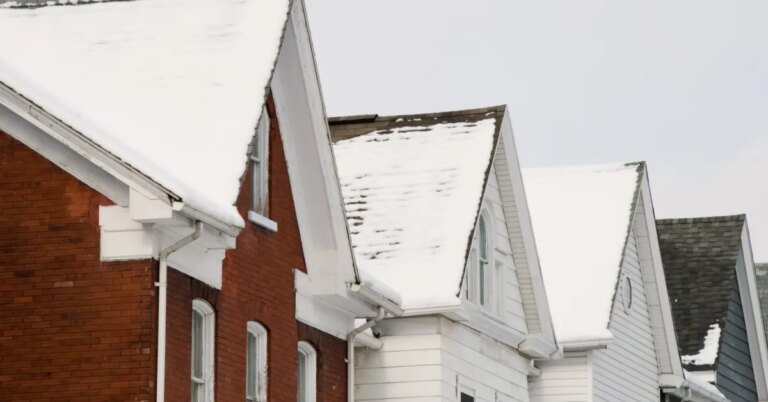The government shutdown is delaying the release of critical funds for the Low-Income Home Energy Assistance Program (LIHEAP), a little-known program that provides heating and cooling payment assistance to households across the U.S.—meaning that millions might be unable to heat their homes as winter arrives.
The federal budget includes billions in funding for low-income Americans that might otherwise struggle to pay their energy bills. But as the stalemate drags on, experts say that the local offices that administer the program might be unable to help households pay their bills on time as temperatures drop in the coming weeks.
In Pennsylvania, the state’s Department of Human Services announced that they will be delaying the opening of the LIHEAP program, which typically begins on Nov. 3, by one month due to the shutdown. The state’s annual winter utility shutoff moratorium, which prevents utility companies from shutting off power for those living in poverty during the coldest months of the year, does not begin until Dec. 1.
The delay will be a blow to many residents, who have already seen bills increase anywhere from 5% to 40% this year, says Elizabeth Marx, executive director of the Pennsylvania Utility Law Project. This year, Marx says, more Pennsylvanians are facing energy shutoffs than in previous years. Meanwhile, New York’s governor Kathy Hochul recently announced that the state’s program will not be able to open until mid-November at the earliest.
“From January to August of this year, we’ve had over 280,000 Pennsylvanians face involuntary termination of their gas, electricity, and water to their homes, which overall is about a 15% increase year over year,” says Marx.
Delays to LIHEAP payments come as energy costs continue to rise around the country. The National Energy Assistance Directors Association (NEADA) estimates that the price of electricity and natural gas will increase at twice the rate of inflation this winter, with prices for home heating this winter estimated to increase by about 7.6% from last year on average. This is on top of 2025 already being a record year for utility rate increases, along with the explosion of new data centers which are also making residential energy bills soar.
Read more: The Backlash to High Electric Bills Could Transform U.S. Politics
“The skyrocketing demands for rate increases that utilities are requesting at the state level are threatening higher residential prices, and energy insecurity and the threat of utility disconnection is only going to become a bigger problem for low income households,” says Uma Outka, professor at the University of Kansas who focuses on energy and environmental law.
All of this disproportionately impacts lower-income households, which sometimes pay as much as 30% of their income on energy, says Marx.
Congress could approve a continuing resolution, which would provide temporary funding to certain categories. But even if funds were to be approved, the earliest they would be released would be December, says Mark Wolfe, executive director of the NEADA—and in some parts of the U.S., time is of the essence.
“It takes at least four to six weeks to get the money out,” says Wolfe. “State plans have to be approved, and they have to run the formula. They have to announce to the states how much they’re going to get. All that takes time.”
What’s more, the Trump Administration fired the entire LIHEAP staff at the Department of Health and Human Services (HHS) earlier this year, meaning that once the funding is released, getting it to the states will take longer than usual.
“Because you don’t have that central authority, who’s going to push to get the formula right? Who’s going to push to get the funds released?” says Wolfe. “In a practical sense, they’re the ones who play a key role making sure that the clock runs on time, and they’re gone.”
Though Trump proposed eliminating funding for the program, the House and Senate appropriation bills both provided roughly the same level of funding for LIHEAP as last year—but administrators will have to do more with less.
“Even if we get the same amount of money we got last year, that’s still a cut,” says Wolfe. “The purchasing power of the program is going down, and these high electric costs are hitting families.” Meaning the same dollar amount isn’t going as far as it once did.
Some states are still able to operate using leftover budgets from last year. In Massachusetts, LIHEAP will only provide assistance for emergencies—like if a household receives a termination notice or has less than three days’ supply of deliverable fuels.
Joe Diamond, executive director of MASSCAP, which helps connect Massachusetts residents with local LIHEAP administrators, cautioned that the lack of LIHEAP funds will likely be felt across all households. “The program typically helps bring down energy prices for everyone, and if bills go unpaid due to LIHEAP delays, there’s a risk of price increase across the board,” he said in a statement to TIME.
In Pennsylvania, Marx says local programs usually begins collecting information from those looking to sign up for LIHEAP in September or October, and they’re already behind. “We’ve been moving forward as though things will fall into place, and we remain hopeful that they will, but at this point, I also need to be realistic with the community that, unless things turn around almost overnight, the program won’t open in time,” she says.
In light of the delays, the NEADA is calling on utilities to suspend the practice of disconnecting service for households who don’t pay their bills until federal LIHEAP funds are released.
Until then, the delays will be hard felt. “We’re going to have a lot of people in November without heat, and being without heat in Pennsylvania in November is dangerous,” Marx says. “What we will see is severe consequences to the health and safety of folks not only in Pennsylvania, but in cold weather states across the country. It is going to be a real problem.”

